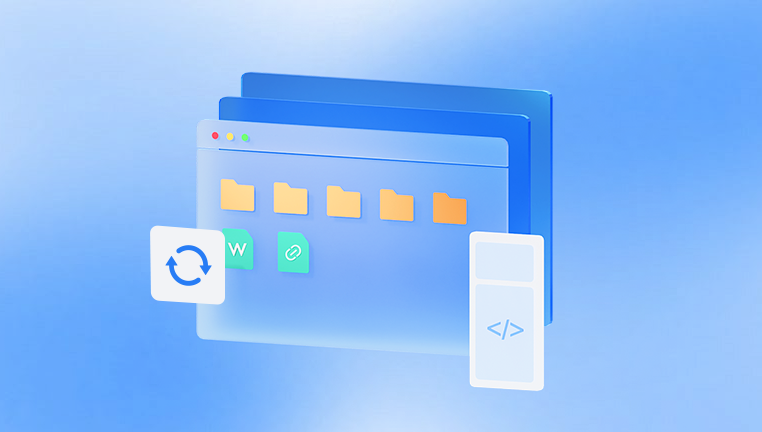Imagine working for hours on a spreadsheet, entering data, building complex formulas, and formatting everything perfectly only to accidentally overwrite the file. It's a nightmare scenario many have faced at least once. Fortunately, if you act quickly and know the right techniques, you can often recover an overwritten Excel file and save yourself from losing important work.
When a file is overwritten, the original content is replaced with new content under the same file name. Unlike simply deleting a file which moves it to the Recycle Bin overwriting often doesn't leave an easy-to-recover copy behind.
However, modern systems and software like Microsoft Excel often create temporary backups or maintain version histories to help users recover from such accidents. This means you still have a good chance of retrieving your lost data.

Immediate Steps to Take
If you realize you've overwritten a file:
Stop using the computer or drive where the file was saved. This helps avoid further overwriting recoverable data.
Check if AutoRecover or version history options are available in Excel or your storage system.
Stay calm. Acting methodically increases your chances of successful recovery.
Method 1: Recover from Excel's AutoRecover Feature
AutoRecover is a built-in feature that automatically saves versions of your file at regular intervals.
How to Use AutoRecover:
Open Excel.
Click on File > Info.
Look for a section labeled Manage Workbook or Manage Versions.
If Excel has saved an earlier version, you’ll see it listed here.
Click on the available version to open it.
Save it as a new file to avoid overwriting again.
Notes:
AutoRecover works best if you had saved the file at least once before overwriting it.
If you never saved the file before overwriting, AutoRecover might not have anything available.
Method 2: Restore Previous Versions in Windows
Windows has a feature called File History or Previous Versions that can restore older versions of files.
Steps to Restore:
Right-click on the Excel file.
Select Properties.
Go to the Previous Versions tab.
A list of available versions will appear (if File History or System Protection is enabled).
Select the version you want and click Restore or Copy to save it elsewhere.
Important:
File History must be enabled beforehand for this to work.
You can also access previous versions through your backup if you have File History configured.
Method 3: Recover via OneDrive or SharePoint Version History
If your file was stored in OneDrive, SharePoint, or Teams, Microsoft automatically keeps version histories.
How to Use Version History:
Navigate to the file location on OneDrive or SharePoint.
Right-click the file and select Version History.
A panel will appear showing previous versions.
Browse the list, click the desired version, and restore it.
Why It's Helpful:
Cloud storage often maintains multiple historical versions, sometimes even if changes are frequent.
It's an extremely reliable recovery method if you work in a shared or corporate environment.
Method 4: Check Temporary Files
Sometimes Excel stores temporary versions of files in hidden locations.
Find Excel Temporary Files:
Press Windows + R, type %temp%, and hit Enter.
Look for files starting with ~ or files ending with .tmp.
Temporary Excel files often have names like ~Excel####.tmp.
If you find a likely file, open it with Excel and see if it contains your lost data.
Caution:
Temporary files can be deleted automatically if the system restarts or after a short period.
Method 5: Use the Document Recovery Pane
If Excel crashes or shuts down improperly, it often opens a Document Recovery Pane on restart.
Steps:
Open Excel.
If a document recovery pane appears, check the listed files.
Click on each to review its contents.
Save the correct version to a safe location.
This method usually works after a sudden shutdown but can occasionally show older versions if Excel detects unsaved changes.
Method 6: Recover from Backup Software
If you use third-party backup software like Acronis, Backblaze, or even built-in Windows backup tools, you can recover a previous version.
General Steps:
Open your backup software.
Search for the Excel file.
Look for backup points before the file was overwritten.
Restore the backup version to a different location.
Reminder:
Backup software typically saves multiple recovery points, increasing your chances of success.
Always double-check restoration dates before restoring.
Method 7: Data Recovery Software
Drecov Data Recovery
When an Excel file is overwritten, the original data isn’t always immediately destroyed it often remains hidden on the storage device until it’s permanently replaced. Drecov Data Recovery specializes in scanning deep into the drive to locate previous versions of your Excel files that might still be recoverable. Whether the file was saved over once or several times, Panda’s advanced algorithms increase the chances of restoring critical information.
Using Drecov Data Recovery is straightforward: just launch the software, select the drive where the Excel file was stored, and run a deep scan. The program will search for lost, hidden, and previous versions of Excel documents. Once the scan is complete, you can preview recoverable files and restore the one you need with just a few clicks.
Important Tips:
Avoid installing recovery software on the drive containing the file.
Pay attention to file dates and sizes when selecting files to recover.
Special Note: Recovering Excel Files on a Mac
Mac users have built-in recovery options as well.
Using Time Machine:
Open the folder where the Excel file was located.
Open Time Machine.
Browse back to a time before the file was overwritten.
Select and restore the earlier version.
Using AutoRecover:
Excel for Mac also supports AutoRecover:
Look under /Users/YourName/Library/Containers/com.microsoft.Excel/Data/Library/Preferences/AutoRecovery/.
Search for AutoSaved versions of your file.
How to Protect Your Excel Files in the Future
Once you've gone through the stress of recovering an overwritten file, you'll want to avoid a repeat. Here are some best practices:
Enable AutoSave in Excel:
If you use OneDrive or SharePoint, AutoSave ensures your file is constantly backed up.
Use "Save As" More Often:
Instead of overwriting, save new versions like "Report_v2.xlsx", "Report_v3.xlsx", etc.
Enable File History in Windows:
This automatically saves older versions of all documents.
Regular Backups:
Use external drives or cloud backups (like Backblaze, Acronis, or Google Drive) to keep multiple copies.
Use Version Control Software:
Tools like Git or specialized document management systems offer better version control for important projects.
Educate Your Team:
If you work in a team setting, make sure everyone knows not to overwrite files without creating backup versions first.
Frequently Asked Questions
Can you recover an Excel file that was overwritten and saved?
Yes, using features like AutoRecover, Previous Versions, OneDrive/SharePoint Version History, or third-party recovery tools.
What happens if AutoSave overwrites my file?
Check the Version History in OneDrive or SharePoint. AutoSave-enabled files often maintain backup versions even after multiple edits.
Can you recover overwritten files without previous versions enabled?
It becomes much harder. Your best bet would be checking temporary files, using professional recovery tools, or hoping that Excel's internal backup mechanisms kicked in.
Is it safe to use third-party recovery tools?
Yes, if you choose trusted tools like Recuva, EaseUS, or Disk Drill. Always download from official websites.
Accidentally overwriting an important Excel file can feel devastating, but all hope is not lost. With built-in features like AutoRecover, Windows Previous Versions, OneDrive Version History, and even temporary files, there are multiple ways to get your data back. If those fail, powerful recovery tools offer another path to success.
By staying calm, acting quickly, and following the right steps, you dramatically increase your chances of recovering an overwritten Excel file. And by implementing smart backup and version control strategies moving forward, you can protect yourself from similar situations in the future.




